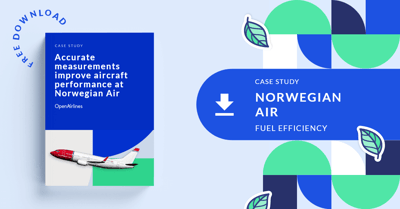3 benefits of Aircraft Performance Monitoring for better operations
As aircraft age, their performance tends to lower. This degradation of performance can be explained by the usual performance degradation and many incidents or factors that can reduce the performance of an aircraft, such as a misrigging of a spoiler, a dirty fuselage, etc.
Aircraft performance monitoring allows to follow and analyze the actual performance of the fleet to act on its degradation. Knowing the actual performance of an aircraft is essential to fly safely and to be fuel-efficient, as it permits to be precise in fuel planning and to take mitigating actions to improve the performance.
Here are three benefits you can get from monitoring your fleet performance.
Accurate fuel factor
The fuel factor of an aircraft represents the factor between the theoretical performance of the airplane (book values) and the actual one. It is a critical input in the FMS and flight planning system. Indeed, when preparing a flight plan, flight planning systems will use the fuel factor to compute the fuel needed to fly the aircraft on a particular route. The amount of fuel is directly linked to the aircraft's performance: if an airplane has low performance, it will burn more fuel to fly the same distance.
Not having an accurate fuel factor can result in two opposite effects.
- If the performance is worse than planned, not enough fuel could be taken, resulting in safety issues.
- If the performance is better than planned, too much fuel is taken, and additional fuel is burnt for carrying the extra weight. Here is an interesting article: how to use the cost of weight to be more fuel-efficient?
Therefore, closely following the aircraft's performance and having an accurate fuel factor improves safety and saves fuel.
Frequent updates of the fuel factor
Continuously monitoring and updating the fuel factor allows matching the aircraft's actual performance very closely. As explained above, when the actual performance is known, fuel planning is more precise, safety is increased, and fuel is saved.
When the fuel factor is updated at a low or high frequency, accuracy is loss. When the update is more frequent, the fuel factor used in flight planning is closer to the actual performance, resulting in more precise flight plans.
Having precise flight planning is very beneficial for the trust of dispatchers and pilots in the flight plan, also resulting in less discretionary extra fuel.
Reduced performance degradation with proactive maintenance
When monitoring the performance daily or weekly, it is possible to notice rapid changes in performance. These rapid changes, not linked to the aging aircraft, are usually related to an issue on a piece of the plane: the engine, the surfaces, etc.
Knowing directly when an issue occurs and where it comes from is crucial for proactive maintenance. Instead of discovering the case at the next maintenance check, it is identified just after it happens and can be fixed rapidly. This directly results in a performance gain.
Constant monitoring of the aircraft performance
Aircraft performance monitoring brings you at least three benefits to your operations.
These benefits all come from an accurate fuel factor and the constant monitoring of the aircraft's performance.
While nowadays it can be very long and tedious to measure the performance of a fleet, SkyBreathe APM solution automatically computes degradation indicators on each aircraft, with zero workload, every day.
LEARN MORE
[CASE STUDY] See how Norwegian leverages data analytics to improve its APM process.
>> Download the free case study



